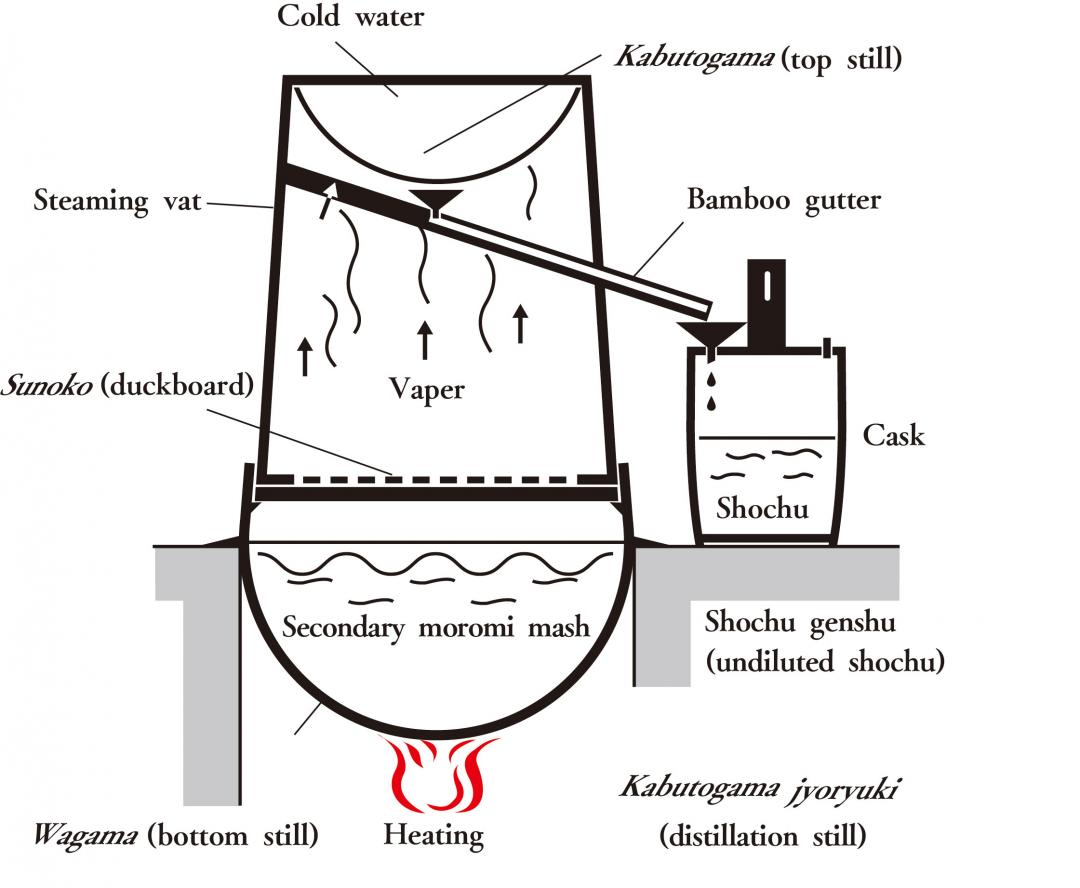12. Distillation
Until the Taisho Period, brewers used a distillation still with two handles on the lid. giving it the appearance of a rhinoceros beetle. The matured secondary mash was poured into the bottom still and heated. Cold water poured onto the top still would cool and liquify the alcohol vapor, extracting the unprocessed alcohol needed for shochu. The unprocessed alcohol trapped in the cask would then be transferred to storage pots.
The Japanese word 'chintara' meaning 'to dawdle' is said to have had its origins in this distillery still.
The 'chin' part comes from the 'chin chin' clanging sound of the hot iron pot and the 'tara' part comes from the 'tara tara' sound of the shochu dripping out from the bamboo tubes. The word 'chintara' meaning 'to dawdle along without any real motivation' is said to have come from the lengthy, boring process of distilling the shochu.

index
3. Is Kuma Shochu Japan's oldest brand of Shochu?
4. Shochu - loved by the samurai and working class alike
6. To Japan and the rest of the world
7. The traditional method of producing shochu
8. Washing and steaming the rice
10. Producing the primary mash
